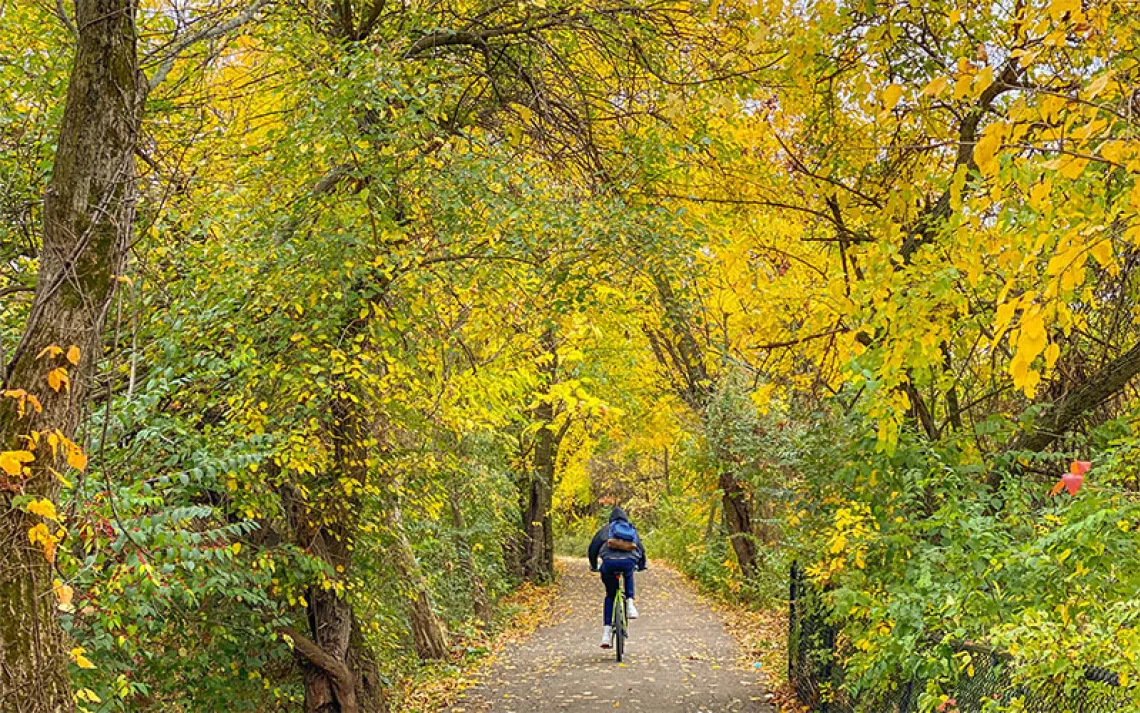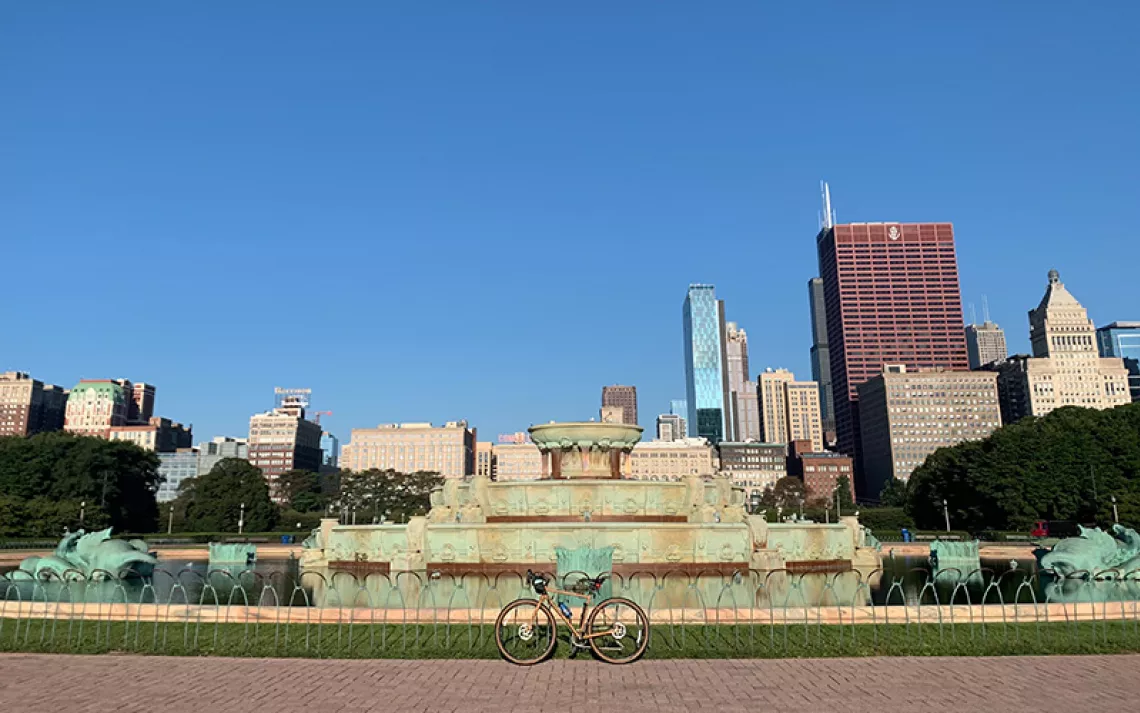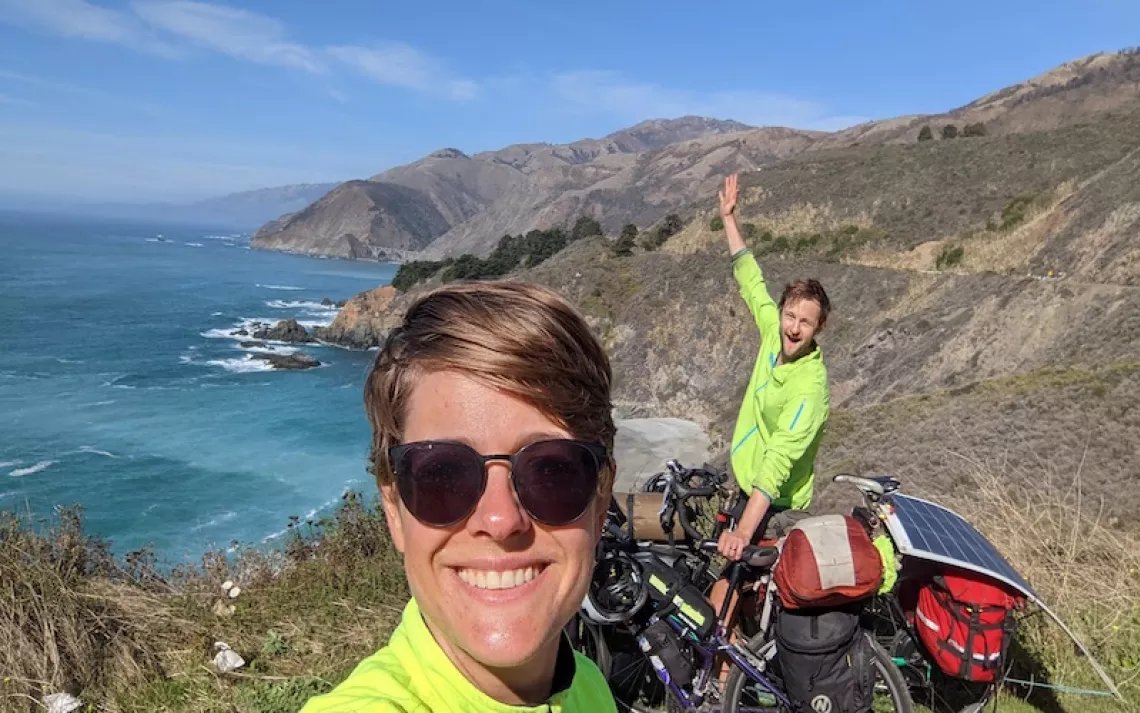Meet the Mountain Biking Loggers Down Under
A writer navigates the challenges of New Zealand’s Whakarewarewa Forest
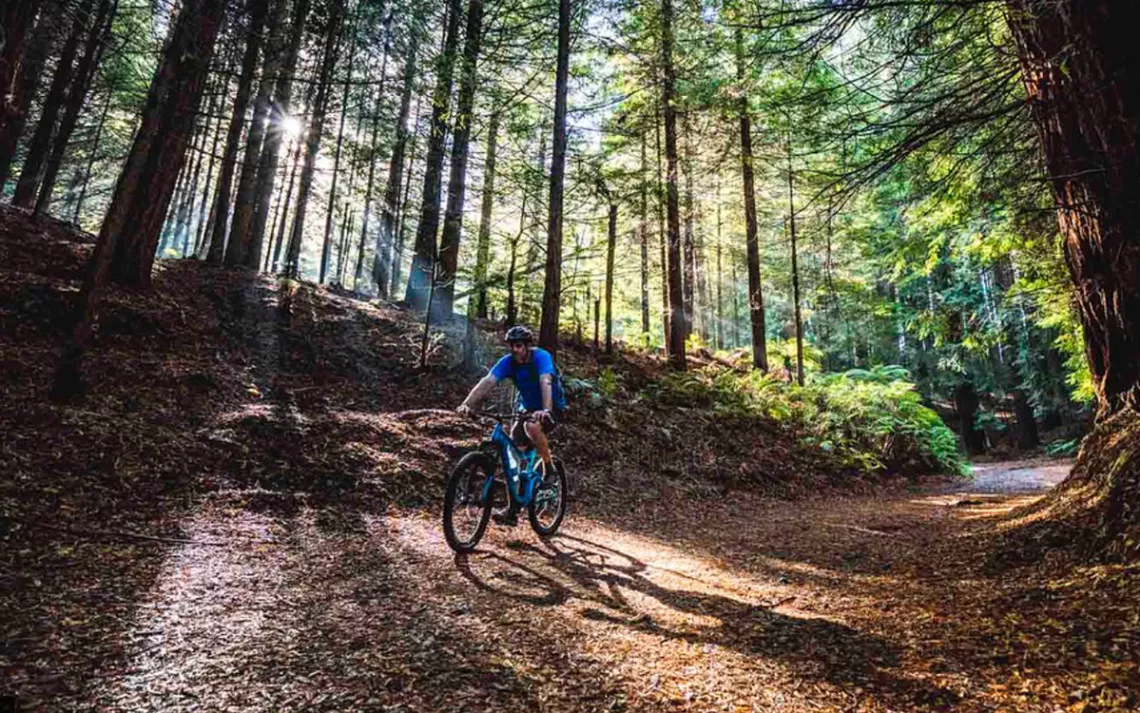
Photo courtesy of Dominic Hook
The trailhead sign was dedicated to Paddy Avery, who “sadly passed away doing what he loved aged 21.”
“So, how often, exactly, do people die riding this route,” I asked my mountain bike guide. He just laughed.
We were deep within the Redwoods Mountain Biking Park in the Whakarewarewa Forest near central New Zealand’s Rotorua. The sleepy town in the hills of the North Island had long been known for its natural thermal baths and local forestry and, oddly enough, for being the birthplace of “Zorbing,” a.k.a. the sport of rolling downhill inside a hamster-ball-like orb made of transparent plastic.
But in recent years, the area has become a mecca for mountain bikers. Several dedicated parks boast hundreds of miles of trails, created in a unique partnership: Local Maori tribe members own the land and the city council leases it for use, shared between mountain bikers and local logging companies in a rare positive alliance. In fact, tribe members, adventurers, and loggers make up the membership of the Rotorua Trails Trust, which built and continues to manage the network.
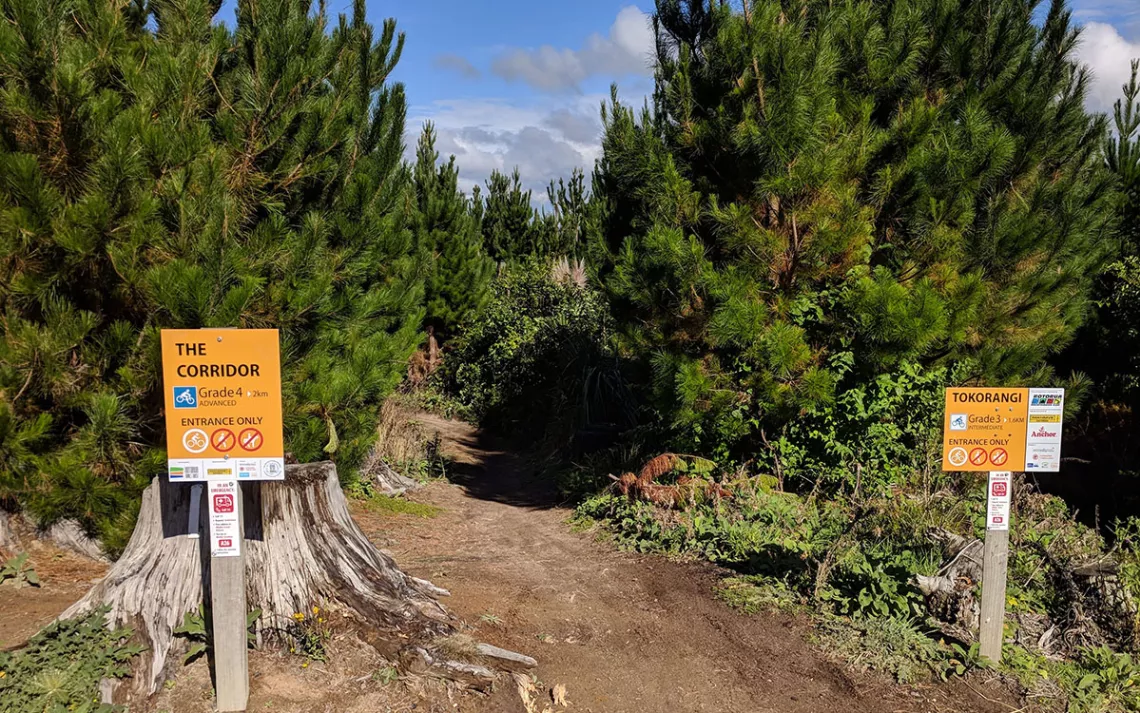
The trails themselves offer a wide range of conditions, ranging from the relaxing to the downright . . . lethal.
“Actually, Paddy died riding because of an undiagnosed heart condition,” my guide finally answered. “He was one of the best, could do anything, but one day that was it. Gotta live life to the max . . . but get yourself checked out too, eh?”
It was fine advice—and captures a bit of the fun-loving but practical (perhaps thanks to a dash of transplanted-down-under English colonial propriety) nature of the Kiwi locals who live in tidy cottages and well-tended vacation homes around the Whakarewarewa’s hills and lakes.
But I didn’t feel terribly sensible as I put my limited downhill biking skills to the test on this particular trail’s twists and turns, dips and jumps. The route was rated “blue” or intermediate, according to the park’s six-tiered green-to-double black diamond grading system, which is similar to those of downhill ski resorts
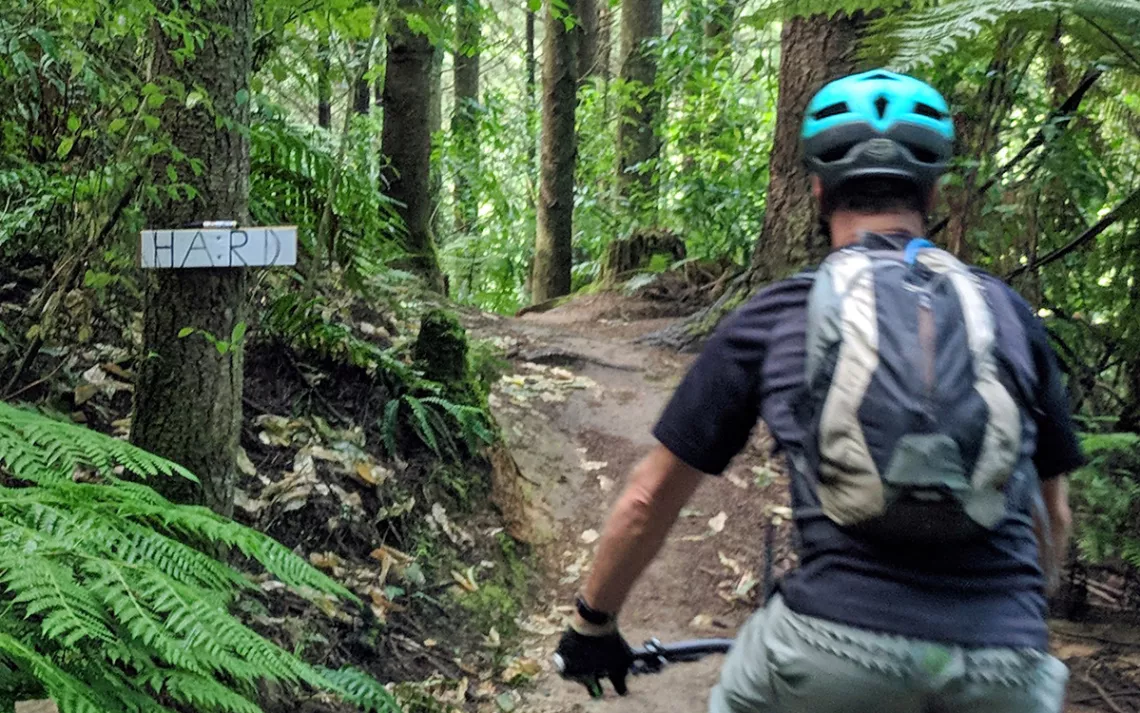
I halted on the trail above a crudely carved sign that simply read “HARD.” There I pondered both my line down this advanced offshoot and the questionable life choices that led me to be standing above a black diamond trail 6,500 miles from home after opting out of the recommended travel medical insurance.
A couple locals bombing down the hill saw me standing at the crossroads and skidded to a stop. In similar situations on advanced trails back home in Northern California, I’d been yelled at by agro youths, as well as older weekend warriors, angry to have to slow down slightly or alter their course for someone they don’t seem to deem as belonging on “their trail.” So, I expected the worst from these locals.
“Hey mate, looking for best way down?” A twenty-something dude with a mullet-cut popped off his helmet and grabbed a drink from his water bottle.
“Uh, yeah, I’m thinking this might be a bit extreme for me.”
Hearing my American accent, his buddy took off his helmet as well, and they offered an elaborate review of the park’s trails, with several specific recommendations for best views, jumps, or just “flow.” A couple other bikers swerved around us with friendly “hellos,” rather than the “get outta the way, a-holes” that I might have expected back home.
Curiously, the last two dudes worked for the local logging company, which cuts down trees and splits them into wood planks or mashes them into pulp for paper. I had actually mistaken the smoke from the nearby sawmill—literally on the border of the biking park—for mist rising from the hot springs.
“Isn’t that kinda weird, chopping down trees when you spend your time enjoying the forests?” I asked them.
“Ah, no, logging is only thing to keep this from turning into a big subdivision,” said the mulleted dude while waving to the hills. “And the trees grows back crazy quick in our volcanic soil.”
“And we’re the ones who build the features here, the jumps and berms. The company lets us use the extra wood—we have haips!”
“Haips? Is that a kind of tree?”
The bikers looked at one another with confusion. “Uh, no, I said ‘haips’ like a lot, eh?”
“Ohhhhh, ‘heaps,’” I said, translating.
“Yeah, like I said, 'haips.'”
Trans-Pacific English language confusion settled, they put their helmets back on and dropped straight down the HARD path like a couple of neon bowling balls. I opted for one of their recommended gentler routes, which reunited me with my guide. I found him calmly gazing off into the hills. “Ah, there ya are, mate,” he said, without evidencing much worry he had lost me.
My guide coolly cruised ahead, leading the way on trails he had ridden “sometimes twice a day, I reckon a few thousand times in the past 20 years.” I suspected he could have done them with his eyes closed, leading solely via the sense of smell of the rich earth and greenery and the shifting sounds of gravel, dirt, and muddy terrain under his tires.
He guides with Mountain Bike Rotorua, a company founded by Tak Mutu, a native Maori. Both men grew up riding the local hills, “just something we did, go ‘round on bikes,” Tak told me later. “Not like a trend or anything.” Tak’s local biking empire now also includes running the annual Crankworx international professional mountain biking tour event in Rotorua.
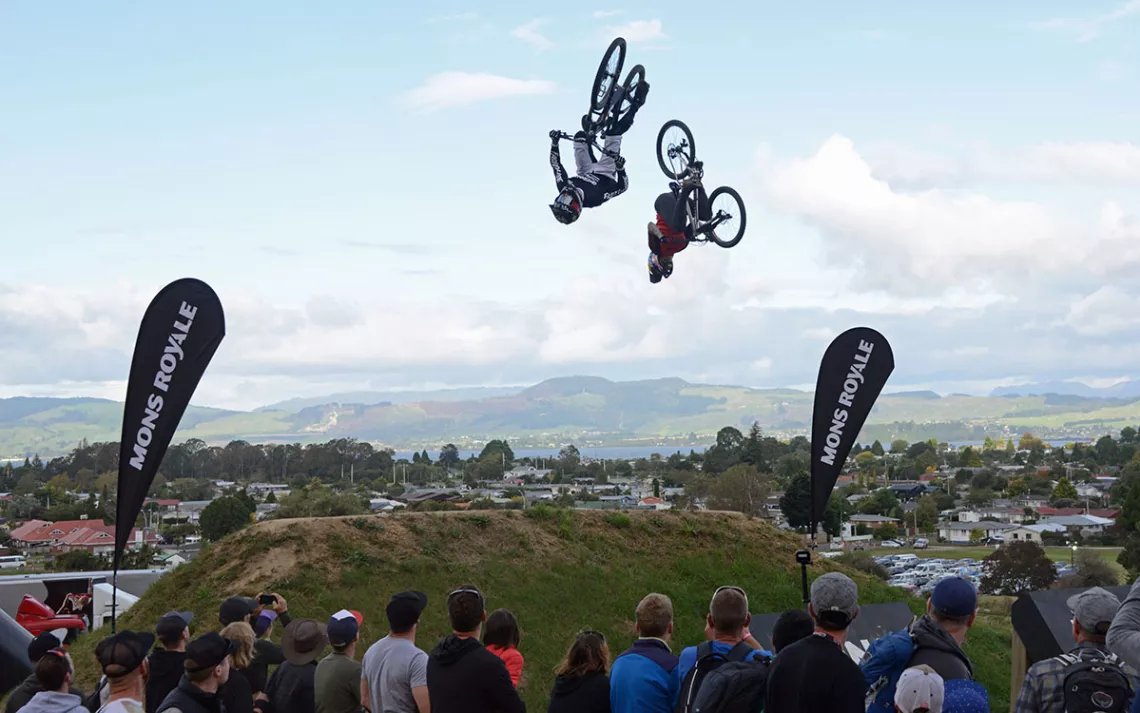
We spent the rest of the day bumping our way up and down the mountain trails, winding through second-growth pine trees at the peaks, and descending through towering redwood groves. We ended up in the lower wetlands, a Jurassic Park–like jungle of giant ferns and palms, complete with a 12-foot-high Maori carving in a clearing. Despite being neither a long-time local nor a professional rider, I survived the day with only a couple of spills and one low-speed encounter with a tree.
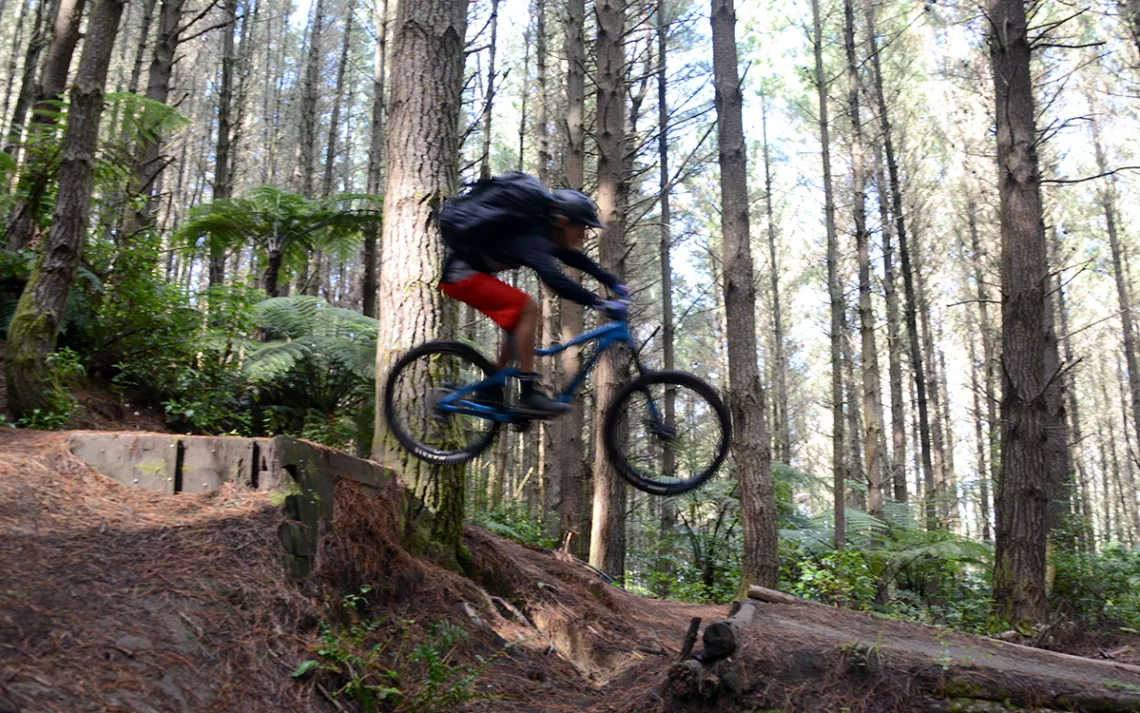
Our redwoods trail ride cruised to a conclusion at the dirt parking lot where a couple dozen cars disgorged more neon-clad riders from around the world. We talked trails at a food truck over a quintessentially New Zealand “flat white” coffee. I returned my rental bike to the shop, where the worker there asked me if I’d had fun.
“Oh yes,” I said. “Haips!”
Follow in the Writer’s Footsteps
Where: The Redwoods Mountain Bike Park is on the outskirts of Rotorua, New Zealand, in the central part of the North Island. It’s about a 45-minute flight or three-hour drive from the main international gateway of Auckland.
Best Time to Visit: Seasons are reversed down under, so the September to March spring-to-fall timeline is best for biking before the winter rains hit. Summer months of December and January can be hot on the exposed sections of trail.
Word to the wise: Know your biking abilities and current conditions before even thinking of tackling the advanced trails. Work your way up from beginner routes to gain an understanding of the park’s classification system. Wet days can make even the kiddie trails tricky. Talk to friendly locals on the trails to get up-to-the-minute assessments of best routes. Using a guide is helpful for navigating the extensive network of trails.
Pro-tip—Watch the pros at Crankworx: If you happen to be in Rotorua in March, and want some mountain-biking inspiration, check out the Crankworx mountain biking event (held March 19-24, 2019) at the Skyline Rotorua Mountain Park. The event features jaw-dropping big-air competitions, death-defying downhill races, and plenty of local beers to motivate a loud crowd.
After Your Ride: Soak your bones and muscles at Rotorua’s natural hot spring complex at Polynesia Spa. They have a wide variety of pools and tubs filled with therapeutic mineral waters with approximate temperatures ranging from body-warming to egg-boiling. Pay a little extra for the luxury side of the complex with scenic views over the lake.
 The Magazine of The Sierra Club
The Magazine of The Sierra Club

